The Dining Room
Introduction
Text-to-speech Audio
Although the extravagant salon served as the most formal room in Corinthian Hall, the Dining Room, designed and decorated in the style made popular by Louis XIV, followed close in formality. The dining room required many restorations, and only about one-fourth of the current dining room exhibit is original to the space. The wood paneling on the north wall, the wall sconces, and the chandelier are all original. However, the wainscoting required complete reconstruction. Additionally, many original furnishings were lost to the 1934 auction or removed during the home's time on the market. Aspects that have been reconstructed are painted a different color than the original pieces, allowing patrons a chance to appreciate the differences between original and reconstructed works. Some of the highlights in the space include the wall tapestry and the gilded chandelier, both of which are original pieces from this room.
Images
A view of the dining room from the living room, Patrons will be able to differentiate between original aspects and reconstructions based on the light gray paint used on reconstructed portions of the room.
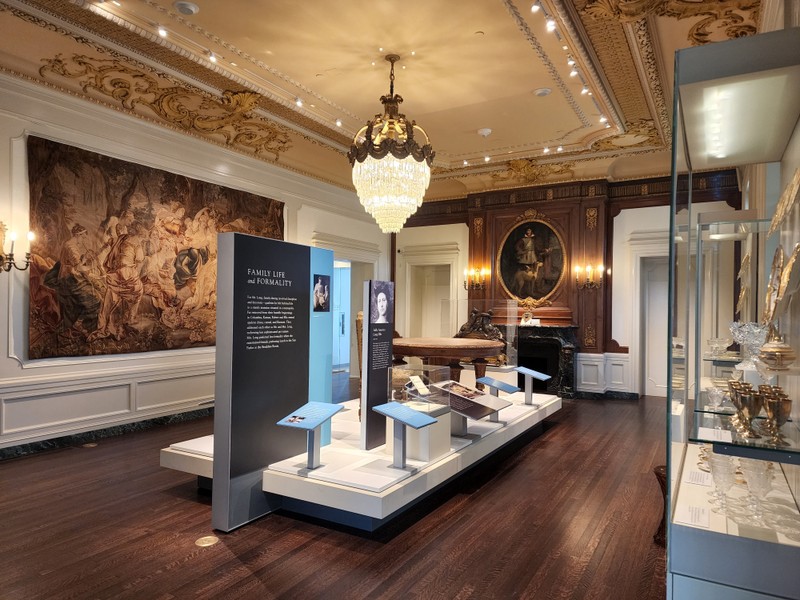
The original chandelier and tapestry located in the dining room
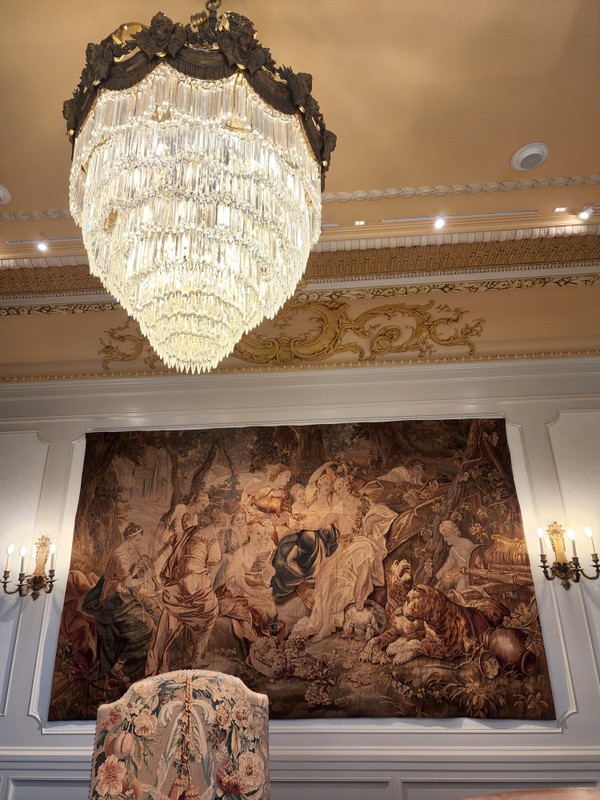
Clock from the dining room
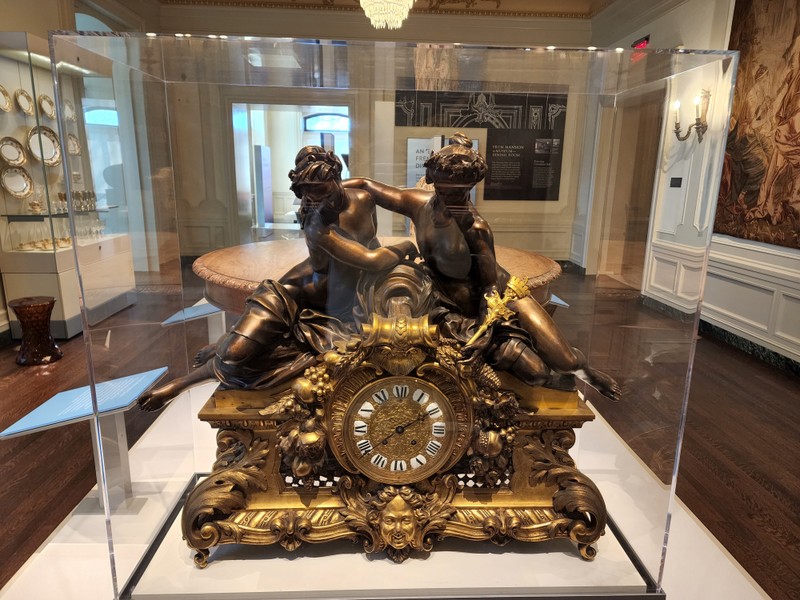
Wall tapestry, chair, and table located in the dining room
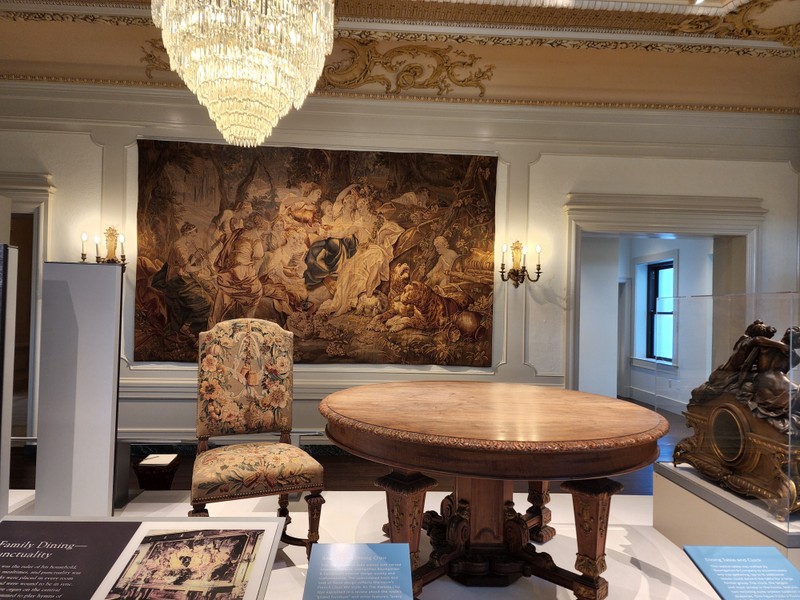
Fireplace located in the dining room
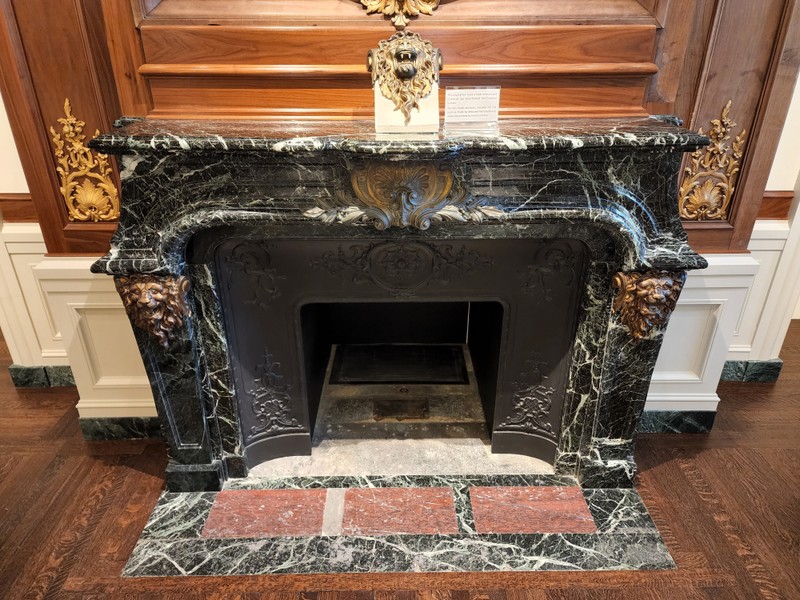
Brass lion's head from the dining room mantle
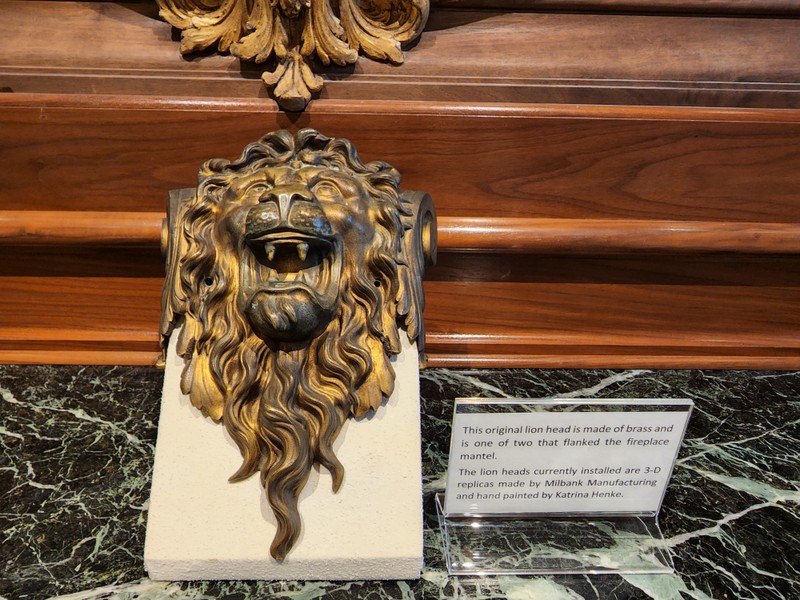
Different angle of the dining room chandelier
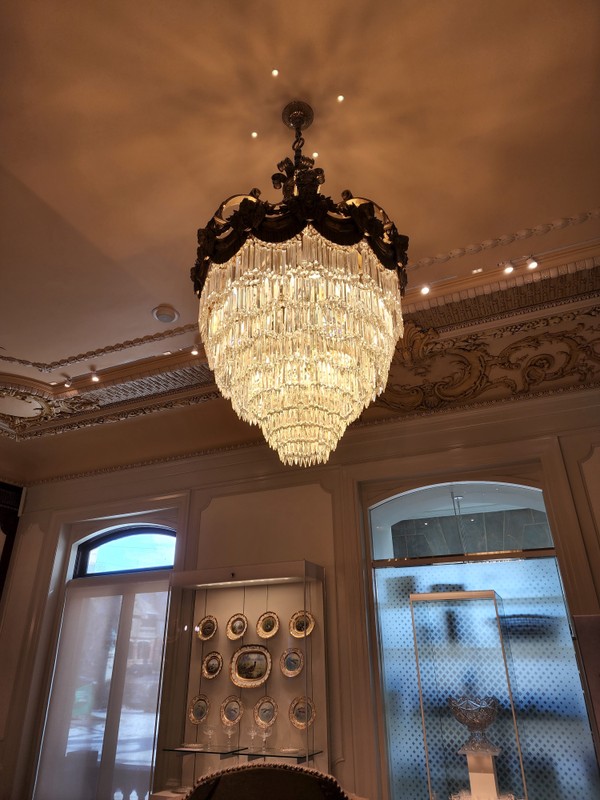
Backstory and Context
Text-to-speech Audio
The formal Dining Room in Corinthian Hall served as a space for both family meals and special events with guests. Baumgarten and Company, the interior design company that furnished the entire home, crafted the formal dining table. The walnut table had sixteen leaves that could be added in order to accommodate 24 dinner guests. The chairs for the table were equally extravagant, with upholstered backs and carved details in the walnut, accentuated with gold leaf.
Not just reserved for guests, the Long family also used the dining room regularly. They ate dinner together each day in the dining room, and sources report that the children were expected to arrive punctually for meals. The many clocks that decorated the home were kept in sync, and the organ that was housed in the home was used daily to indicate meal times and twilight. While dining in this room, the family used fine china and crystal, some of which is on display on the far right wall of the room. Mrs. Ella Long preferred to use the Breakfast Room or Sun Parlor for less formal meals. There she entertained close friends or dined with her grandchildren.
The most formal dinner event hosted by the Longs occurred in October of 1921. As president of the Liberty Memorial Association, Robert A. Long hosted a dinner celebrating the dedication of the construction of the Liberty Memorial, dedicated to World War I veterans from Kansas City. Three admirals from the war attended the seven-course dinner, emphasizing the Long family's prominence at the time, and acknowledging his role in making the memorial a reality. While the evening was certainly spirited, as strict teetotalers the Longs ensured the dinner was devoid of alcoholic beverages. The Consecration of the Memorial occurred in the following month, and Mr. Long rode in the formal procession. British Admiral of the Fleet David Richard Beatty, as well as the other commanders from the five Allied countries, attended the consecration. Future President of the United States, Harry S. Truman, dispensed flags to the commanders. The Liberty Memorial still stands in Kansas City, Missouri, and is part of the National World War I Memorial and Museum.
As Sally and Loula Long grew into adulthood, the Long family expanded, and Mr. and Mrs. Long had every intention of remaining close with their daughters and grandchildren. The eldest daughter, Sally America Long, married U.S. Naval officer Hayne Ellis in 1904. The couple had five children, and Robert and Ella maintained a suite for the Ellis family within Corinthian Hall so they would visit often. Four of Sally's children were born at Corinthian Hall, and the nursery included in the Ellis' suite provided the family with support and comfort. Sally Long and Hayne Ellis were married for 57 years when he unexpectedly passed away while visiting Longview Farm in 1961.
The centerpiece of the dining room, the gilded chandelier with over 600 crystal prisms, hung in the Long home from 1910 until 1934 when it was installed in Longview Farm's dining room. The chandelier was returned to Corinthian Hall in 1971 after Loula Long Combs' death. The wall tapestry celebrating Dionysius, once again hanging in its original location, is an ironic inclusion in the family's home. An original brass lion's head from the mantel is also present in the space, and reconstructed lion heads created by Milbank Manufacturing and painted by Katrina Henke now occupy the original placement of the brass pieces.
The use of microscopic analysis allowed the architectural preservationists, designers, and historians working on Corinthian Hall's restoration project to determine the original paint colors used on the home's walls. They also determined the initial finishes that woodwork and plaster in the home had, thus allowing them to restore as much of Corinthian Hall's historical integrity as possible. However, for aspects of the home that could not be restored, reconstructions were created. Patrons will be able to differentiate between original aspects and reconstructions based on the light gray paint used on reconstructed portions of the room. The restoration of the dining room, even without all of the original pieces or features, allows patrons to view the extravagance of the Long family's home. Yet the room also offers the importance the family placed on quality time, routines, and maintaining relationships throughout their lifetimes.
Sources
Kansas City Museum, 3218 Gladstone Blvd., Kansas City, MO, 64123 (accessed March 8, 2022). Wall Plaques: Wall text. An "Exuberantly French" Dining Room, Kansas City Museum, Kansas City, Missouri.
